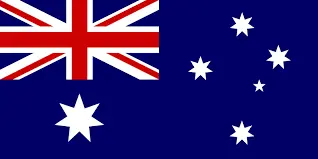
PSYC20042 Psychology, Wellbeing, and Resilience Website Blog Report
Assessment Brief
In Assessment 2 you will design and produce a Positive Psychology, Wellbeing, and Resilience website blog consisting of five individual blog posts.
For Assessment 2, you will
• Research a free web blog platform to use (e.g., free platforms such as WordPress, Tumblr, Blogger)
• Prepare a series of five blog posts, one post per topic area from Assessment 1 (your five chosen topic areas, or four chosen topics and the Aboriginal and Torres
Strait Islander peoples and wellbeing topic area), with evidence-based information (and references) pertaining to the area
• Detail at least one suitable, evidence-based wellbeing intervention/exercise/practice area per topic area.
For each topic area, you will provide evidence-based information (and references) pertaining to the area (wellbeing and/or resilience focus), and detail at least one wellbeing intervention/practice idea – underpinned by empirical evidence – per area.
For example, if one of your topics was self-compassion, you would tell your reader about self- compassion (what it is and why it’s important to wellbeing) and then you could detail a self- compassion intervention/exercise/practice (e.g., the ‘How would you treat a friend’ exercise) for your readers to try.
The intervention/exercise/practice should be one that can be self-administered (i.e., the person reading can try it), rather than something that they would usually do with a professional (e.g., therapist). For example, the ‘How would you treat a friend’ exercise is an exercise that individuals can try themselves; whereas, Compassion-focused therapy (CFT) is something that the individual cannot do on their own.
Audience and Visual Presentation
Blog posts should be prepared for a non-academic audience. This may be a general lay audience, or a particular audience (e.g., particular profession; specific group such as people experiencing a particular life event). Remember, however, that your writing needs to be underpinned by evidence. An important part of this assessment piece is to make your posts engaging for your readers. This will be by utilising techniques often used in blogs, such as:
• Speaking directly to your readers
• Asking your readers questions (e.g., “Have you ever...?’)
• Sharing some life experiences (e.g., ‘When I was a new mother...’)
• Using lists or numbering where appropriate (e.g., ‘Top Ten Tips for Better Nutrition’).
Setting up a Blog
It does take a little time to learn how to set up a blog if you have not done it before. Therefore, it is recommended that you start to look at platforms early in the term and practice using the platform, so that once you have written your posts, you are ready to set up each individual post on your live blog. Some resources will be posted early in the term on setting up a blog.
Live Blog
It is expected that you blog will be live (i.e., available via a URL) so that the Unit Coordinator can visit the blog to mark your posts. Occasionally, students have had concerns about posting a live blog. In this case, you may be permitted to use a program such as Microsoft Word or a graphic design platform (e.g., Canva) to produce posts that look like a blog but are not posted on the Internet. If you are considering doing this, you must first seek approval from the Unit Coordinator prior to proceeding. It is expected that non-live posts will emulate the look and feel of a live blog (e.g., use of formatting, pictures, multimedia).
Assessment Criteria
You will be assessed on:
• Your examination of main issues pertaining to topic areas
• Rationale for choosing, and evaluation of, specific evidence-based interventions/practices, including detailing considerations for use of the interventions/practices
• Presentation and written communication skills, including attention to context, audience, and purpose of the blog
• Use of citations and references
• Adherence to word count.
These assessment criteria are detailed in the Marking Rubric for the assessment piece. Please ensure that you are familiar with the rubric.
Solution
Topic 1: Social and Emotional Wellbeing of Aboriginal and Torres Strait Islander People
In the case of Aboriginal and Torres Strait Islander people, social and emotional well-being is the cornerstone of both physical and mental health (Commonwealth of Australia 2017). It is because this arises from a web of interactions between people, family and the community. The social and emotional well-being of Indigenous Australians differs throughout people and among cultural groups (Brown et al., 2023, p.1935). The notion of social and emotional well-being acknowledges that a person's well-being is also impacted by the social determinants of health. Indigenous Australians define health as the "social, emotional, and cultural well-being of the whole community" in addition to an individual's physical well-being (Fatima et al., 2023, p.31). This definition is based on a person's relationships to their country, culture, family, spirit, and physical and mental health.
Additionally, the National Agreement acknowledges that Aboriginal and Torres Strait Islander cultures are essential to better life outcomes for Indigenous Australians. All initiatives carried out by the Agreement must uphold, protect, and enhance these cultures. The following goals have been specifically set by the agreement to promote the cultural wellness of Indigenous Australians as shown in Figure 1 below (indigenoushpf.gov.au, 2024).
.png)
Figure 1: Targets to support cultural well-being
(Source: indigenoushpf.gov.au, 2024)
This particular group is marked with suicides and attempts to death based on different stress in life and stress factors. In the words of Smallwood et al., (2023, p.2088), the Aboriginals and Torres Strait Islanders had been facing severe issues over time in search of good living and livelihood. Owing to this there had been intervention which was developed for the betterment of indigenous people living in Australia. Figure 2 below shows the rate of suicide attempts which had been caused by the people of this indigenous group (indigenoushpf.gov.au, 2024). Thus, the intervention of the Mental Health Agreement was formulated to secure sustainability and improve the services provided by the Australian mental health and suicide prevention system. It also aimed to improve the mental health of all Australians and governments have come together to establish the Mental Health Agreement (Masotti et al., 2023, p.741).
Figure 2: Suicide attempts by Aboriginals
(Source: indigenoushpf.gov.au, 2024)
In addition to responding to the Productivity Commission Inquiry into Mental Health, the National Suicide Prevention Adviser's Final Advice, the Mental Health Agreement pledges to carry out work under the Fifth Plan going forward (indigenoushpf.gov.au, 2024). Regional planning and commissioning, priority populations, stigma reduction, safety and quality, gaps in the system of care and suicide prevention are the main areas of attention. On the other hand, psycho-social supports outside the National Disability Insurance Scheme (NDIS), workforce, and national consistency for initial assessment and referral are among the priority areas covered by the Mental Health Agreement for university assignment help.
Brown, A., Haregu, T., Gee, G., Mensah, F., Waters, L., Brown, S. J., ... & Armstrong, G. (2023). Social and emotional well-being of Aboriginal and Torres Strait Islander peoples in Aboriginal-controlled social housing. BMC public health, 23(1), 1935. https://link.springer.com/article/10.1186/s12889-023-16817-y
Fatima, Y., Liu, Y., Cleary, A., Dean, J., Smith, V., King, S., & Solomon, S. (2023). Connecting the health of country with the health of people: application of" caring for country" in improving the social and emotional well-being of Indigenous people in Australia and New Zealand. The Lancet Regional Health–Western Pacific, 31. https://www.thelancet.com/journals/lanwpc/article/PIIS2666-6065(22)00263-2/fulltext
indigenoushpf.gov.au (2024) Social and emotional wellbeing Retrived on 9 May 2024 from: https://www.indigenoushpf.gov.au/measures/1-18-social-emotional-wellbeing
Masotti, P., Dennem, J., Bañuelos, K., Seneca, C., Valerio-Leonce, G., Inong, C. T., & King, J. (2023). The Culture is Prevention Project: measuring cultural connectedness and providing evidence that culture is a social determinant of health for Native Americans. BMC Public Health, 23(1), 741. https://link.springer.com/article/10.1186/s12889-023-15587-x
Smallwood, R., Usher, K., Woods, C., Sampson, N., & Jackson, D. (2023). De?problematising Aboriginal young peoples’ health and well?being through their voice: An Indigenous scoping review. Journal of clinical nursing, 32(9-10), 2086-2101. https://onlinelibrary.wiley.com/doi/pdf/10.1111/jocn.16308
Topic 2: Aging and Wellbeing
Aging and well-being are interrelated as people who are aging need to be taken proper care of and need to lead a healthy life. It is observed in most cases that, old people face a lot of health issues due to which the health fitness of the aging group of people is hampered to an extreme level. In the words of Holly et al., (2023, p.38), Aboriginal Australians are marked with facing high rates of chronic diseases such as type 2 diabetes, and lung and heart diseases. The most common disease which is found among Aboriginal Australians is dementia which is a mental sickness. Due to these particular factors, it is important to keep aging people healthy so that they can lead a good life. Moreover, it is also noted that the rate of diseases suffered by aging people in non-indigenous people is less than indigenous people.
Well-being for the indigenous group matters a lot as aging people of the indigenous group need utmost care and nurture in their older days of life. Finding more effective ways for Aboriginal communities to receive the health care they require. It makes recommendations for improvements to services aimed at enhancing Aboriginal health, particularly in older populations (Riitsalu et al., 2024, p.68). Indigenous communities have longer life expectancies, which is reflected in the rise in the proportion of older persons with age-related syndromes and chronic health disorders. Indigenous peoples' aging health and well-being may be enhanced if certain modified lifestyle factors are addressed, as many of these illnesses are linked to them. A deeper comprehension of what aging well means for Indigenous people is necessary if models of healthy aging are to be promoted within health systems. Indigenous peoples see aging and health holistically, which perhaps sets them apart from Western conceptions.
Figure 3 below shows the rate of fatal and non-fatal diseases which are faced by the aging group of population among an indigenous group of people (ncbi.nlm.nih.gov, 2022). It is evident from the graph that the increasing rate of diseases among older people in this community risks the healthy living and well-being of the people. Therefore, it is mandatory to bring up certain interventions which would be efficient and effective for the better livelihood of older people. The most popular intervention which is found to be used is care homes which treat dementia patients with utmost care and attention (Coffey et al., 2023, p.21959). It is in these care homes that there are different policies and protocols are maintaining which are best suitable for mentally retarded or sick people.
.png)
Figure 3: Rate of fatal and non-fatal diseases
(Source: ncbi.nlm.nih.gov, 2022)
Little is currently known regarding the design and implementation processes of health promotion interventions that support healthy ageing for older Indigenous adults (OIA) (High et al., 2023, p.448). Reducing health inequities and supporting healthy aging across the lifespan are priorities for doctors, academics, healthcare providers, community stakeholders, and rehabilitation professionals. The timing is now right for us to actively involve Indigenous communities in general and OIA in particular in the planning, carrying out, and involvement of intergenerational health promotion initiatives.
Reference for Blog 2
Coffey, J. K., Nelson-Coffey, S. K., Parsley, H., & Pluess, M. (2023). Positive emotion expression at age 11 is associated with multiple well-being outcomes 39 years later. Current Psychology, 42(25), 21954-21966. http://www.johnkcoffey.com/uploads/1/9/0/6/19063163/coffey_nelson_coffey_et_al_2022_ncds.pdf
High, A. C., Ruppel, E. K., McEwan, B., & Caughlin, J. P. (2023). Computer-mediated communication and well-being in the age of social media: A systematic review. Journal of Social and Personal Relationships, 40(2), 420-458.https://journals.sagepub.com/doi/pdf/10.1177/02654075221106449
Holly, L., Wong, B. L. H., van Kessel, R., Awah, I., Agrawal, A., & Ndili, N. (2023). Optimising adolescent wellbeing in a digital age. bmj, 380. https://www.bmj.com/content/380/BMJ-2021-068279.full
ncbi.nlm.nih.gov (2022) Aging Well for Indigenous Peoples: A Scoping Review Retrieved on 9 May 2024 from: https://www.ncbi.nlm.nih.gov/pmc/articles/PMC8866315/
Riitsalu, L., Sulg, R., Lindal, H., Remmik, M., & Vain, K. (2024). From security to Freedom—The meaning of Financial Well-being changes with age. Journal of family and economic issues, 45(1), 56-69. https://link.springer.com/article/10.1007/s10834-023-09886-z
Topic 3: Nutrition and Wellbeing
Heart disease, type 2 diabetes, and kidney disease are only a few of the prevalent nutrition-related illnesses that affect Aboriginal and Torres Strait Islander peoples. A variety of behavioural, biological, social, inherited, and environmental factors can combine or interact to create diet-related disorders (Roy et al., 2023, p.204). Socioeconomic status and other diet-related risk factors for disease, such as insulin resistance, glucose intolerance, obesity (particularly central fat deposition), hypertension, high blood triglycerides, perinatal and postnatal nutrition, and childhood nutrition, are particularly relevant in Indigenous communities (Shinde et al., 2023, p.13411). Diabetes type 2, heart disease, and other chronic illnesses can all be prevented or postponed with a nutritious and well-balanced diet. The greater incidence of illness and disease among Indigenous Australians in comparison to non-Indigenous Australians can be directly attributed to their inability to obtain affordable and nutritious food, a condition known as food insecurity. Obesity and malnutrition can result from food insecurity (Christian et al., 2023, p.13520). Poor food availability and poor access (related to low income and remoteness) are major problems influencing Indigenous Australians' capacity to obtain enough food. About 69% of children in the indigenous group meet the guidelines for regular fruit intake in meals while 3.2% meet the guidelines for regular vegetable intake (indigenoushpf.gov.au, 2024). It is also evident from Figure 4 below that there is a good amount of consumption of soft drinks and flavoured waters among indigenous children which is not suitable for health.
.png)
Figure 4: Key Facts about nutrition levels in Aboriginal children
(Source: indigenoushpf.gov.au, 2024)
The well-being of children among indigenous groups and communities of Australia calls for specific interventions and guidelines which are useful for maintaining a healthy lifestyle. It is noted that NHMRC (National Health and Medical Research Council) provides a set up of specific guidelines for children of the Aboriginal Australian community to follow a dietary plan which is beneficial for their health. Figure 5 below shows that the interventions and dietary guidelines which are set by NHMRC are effective since they allow about 85% of fruit intake for 2-4 years of children and 42% of fruit intake for 15-17 years of children (indigenoushpf.gov.au, 2024). Therefore, this particular intervention allows children of this particular community to follow a good food intake plan and lead a better life. However, in the words of Chen, Debono & Hemsley (2023, p.20), the cost of fruits and vegetables is much higher as compared to other junk foods. Because there are low-income groups people, some of the people from indigenous communities can't keep a regular intake of fruits and vegetables in their diet plan. This is one of the main problems which leads to a gap in nutritional food intake by children as well as adults and older people.
.png)
Figure 5: Guidelines and adequate amount of intake of food and vegetables
(Source: indigenoushpf.gov.au, 2024)
Thus, nutritional aspects are very important for indigenous people living in Australia. It helps maintain a proper lifestyle among the Aboriginal community and also allows the people to stay disease-free. Well-being interventions are very important not only for indigenous people but also for non-indigenous people owing to the lifestyle that is being led by people.
Chen, L., Debono, D., & Hemsley, B. (2023). A bite closer: Using 3D food printing to achieve Sustainable Development Goals 2, 3, 9 and 17. International Journal of Speech-Language Pathology, 25(1), 58-61. https://www.tandfonline.com/doi/pdf/10.1080/17549507.2022.2132290
Christian, A. K., Atiglo, D. Y., Okyere, M. A., Obeng?Dwamena, A., Marquis, G. S., & Jones, A. D. (2023). Women's empowerment, children's nutritional status, and the mediating role of household headship structure: Evidence from sub?Saharan Africa. Maternal & Child Nutrition, 19(3), e13520. https://onlinelibrary.wiley.com/doi/pdfdirect/10.1111/mcn.13520
indigenoushpf.gov.au (2024) Dietary behaviour Retrieved on 9 May 2024 from:https://www.indigenoushpf.gov.au/measures/2-19-dietary-behaviour#:~:text=For%20Indigenous%20Australians%2C%20the%20higher,lead%20to%20obesity%20and%20malnutrition.
Roy, A. S., Mazaniello-Chézol, M., Rueda-Martinez, M., Shafique, S., & Adams, A. M. (2023). Food systems determinants of nutritional health and wellbeing in urban informal settlements: A scoping review in LMICs. Social Science & Medicine, 322, 115-804. https://www.sciencedirect.com/science/article/pii/S0277953623001612
Shinde, S., Noor, R. A., Mwanyika?Sando, M., Moshabela, M., Tadesse, A. W., Sherfi, H., ... & Fawzi, W. W. (2023). Adolescent health and well?being in sub?Saharan Africa: Strengthening knowledge base and research capacity through a collaborative multi?country school?based study. Maternal & Child Nutrition, e13411. https://onlinelibrary.wiley.com/doi/pdfdirect/10.1111/mcn.13411
Topic 4: Stress Reduction for Wellbeing and Resilience
Stress is a main factor that decreases the rate of mental peace and good lifestyle of people living in Australia. Indigenous and non-indigenous people are both marked with stressful lifestyles which leads to inadequate sleep, mental traumas and panic attacks among working groups as well as teenage groups. In the words of Novak & Lev-Ari (2023, p.716), most of the students and working groups in Australia are marked with multiple sclerosis (MS) which is a disease of lack of sleep. The major cause of this is due to stress and study pressure which reduces work-life balance due to study pressure and career building pressure. Young adults, defined as those between the ages of 18 and 26, are sometimes written off as a healthy demographic of 22 people; nonetheless, this is a developmental transitional period characterized by unhealthy risk behaviours, psychological susceptibility, and bad habits (Hartson, Hall & Choate, 2023, p.826). The Institute of Medicine and National Research Council issued a call to action in 2015, which highlighted the dearth of focus on young people in research and the urgent need to identify and solve the particular issues harming their well-being in the twenty-first century. Though there are many different definitions 27 of well-being, in general, it includes the mental, bodily, and social aspects of health 28 as well as ideas like happiness and contentment with life.
It has been demonstrated that the use of mind-body therapies is essential for fostering resilience to long-term stress. A variety of techniques known as mind-body interventions cause the body to go into a condition known as the "relaxation response," which is characterized by decreased sympathetic tone, increased parasympathetic tone, and decreased blood pressure, heart rate, and respiratory rate at rest (Li & Lange, 2023, p.9240). Studies on the psychological concept of mindfulness, which originates from the Buddhist tradition, have found that rumination is reduced in those who participate in mindfulness-based programs that teach people how to develop mindfulness and apply it in their daily lives. Self-regulation of attention and adopting a specific perspective on one's experiences are the two parts of mindfulness. The two main, fundamental components of mindfulness that are now recognized are awareness and the nonjudgmental acceptance of one's experience at the moment (Cepeda-Lopez et al., 2023, p.848637). The role of mindfulness techniques in improving psychological well-being and decreasing reactivity to emotional stimuli may be explained by the way they encourage disengagement from laborious cognitive tasks and improve attentional skills through improvements in working memory. These cognitive improvements then support the development of adaptive and flexible emotion-regulation techniques as well as the ability to deal with negative thoughts and feelings.
Thus, the interventions are a step towards building proper resilience and well-being among the aboriginal communities which would allow them to lead a healthy life. Moreover, leading a stress-free life is the key to a reduction in other diseases as most of the diseases are associated with stress and trauma (Bagereka et al., 2023, p.133). The stress factor is a major part of life that is faced by every human being and this needs to be reduced to have a social and healthy lifestyle. The suitability of the provided interventions can be considered to bring good results in the coming days for the Aboriginal community residing in Australia.
Reference for Blog 4
Bagereka, P., Ameli, R., Sinaii, N., Vocci, M. C., & Berger, A. (2023). Psychosocial-spiritual well-being is related to resilience and mindfulness in patients with severe and/or life-limiting medical illnesses. BMC palliative care, 22(1), 133. https://link.springer.com/article/10.1186/s12904-023-01258-6
Cepeda-Lopez, A. C., Solís Domínguez, L., Villarreal Zambrano, S., Garza-Rodriguez, I. Y., Del Valle, A. C., & Quiroga-Garza, A. (2023). A comparative study of well-being, resilience, mindfulness, negative emotions, stress, and burnout among nurses after an online mind–body based intervention during the first COVID-19 pandemic crisis. Frontiers in psychology, 14, 848637. https://www.frontiersin.org/journals/psychology/articles/10.3389/fpsyg.2023.848637/full
Hartson, K. R., Hall, L. A., & Choate, S. A. (2023). Stressors and resilience are associated with well-being in young adult college students. Journal of American College Health, 71(3), 821-829. https://ir.library.louisville.edu/cgi/viewcontent.cgi?article=1900&context=faculty
Li, L., & Lange, K. W. (2023). Assessing the relationship between urban blue-green infrastructure and stress resilience in real settings: a systematic review. Sustainability, 15(12), 9240. https://www.mdpi.com/2071-1050/15/12/9240
Novak, A. M., & Lev-Ari, S. (2023). Resilience, stress, well-being, and sleep quality in multiple sclerosis. Journal of Clinical Medicine, 12(2), 716. https://www.mdpi.com/2077-0383/12/2/716
Topic 5: Spirituality and Wellbeing
People try to keep their psychological health in check at work. People who practice religion or spirituality can find it easier to manage the demands of their demanding jobs and stressful lifestyles. One strategy for coping with stressful overload situations is workplace spirituality. However, religious or spiritual individuals may face prejudice based on their religion in some nations, which could hurt their psychological health (Koburtay, Jamali & Aljafari, 2023, p.351). Research on happiness and well-being has been increasing over the past few years, but little is understood about the mechanisms behind the importance of spirituality and religion. The fact that aboriginal communities of Australia are marked with different cultural and religious backgrounds which might not match with the non-aboriginal group of people (Wong, 2023, p.17). Therefore, it is the prime factor that beliefs and religious cultures are not hurt to any extent which would cause a disturbance in the proper lifestyle and livelihood of people living in the Aboriginal community.
Moreover, it is known that spiritual practices link a person with all deeds and works that they carry out in their daily life. Therefore, practising religious activity and spirituality not only allows an individual to enhance their beliefs but also allows people to build a strong mental connection and peace within themself.
Spirituality is directly linked to the well-being of an individual since it allows the individual to be calm and handle tough situations with care (Wnuk, 2023, p.973). In the case of the Aboriginal community of Australia, there are different problems such as low income, family struggle, struggle for economic conditions and deprivations, in such a scenario, practicing spirituality leads the individuals to gain a different insight into life and deal with better approaches. Moreover, it is with the help of spirituality, that most care workers and care providers can treat patients.
There are treatment centres which offer spiritual help to those in need and the main motive of these treatments is related to developing a co-ordination between mind and body which heals a person from the inside. The practising of spirituality allows individuals to maintain proper balance with body and mind which helps them to make proper decisions and enhances mental wellbeing (Preston, Coleman III & Shin, 2023, p.44). Moreover, spirituality allows the Aboriginals to collaboratively work with others in the workplace and also lead a stress-free life through rational thinking and good mind-body cooperation. Science's spirituality is a reflection of the profoundly good transcendent experiences such as awe, purpose, and connection that come from working with science (Howard et al., 2023, p.185). It is not everyone experiences spirituality through science, those who do stand to gain a great deal. Better science learning and performance are among the immediate advantages of science involvement. Spirituality is a component that may be associated with favourable results in recent years (Howard et al., 2023, p.185). Even though spirituality, faith, and religiosity are separate academic notions, several scholars contend that the ideas themselves are related. One significant component that is generally linked to resilience in the face of hardship is spirituality. Nonetheless, there hasn't been much research done to date that particularly looks at spirituality about the results of adult care experiences.
Reference for Blog 5
Howard, A. H., Roberts, M., Mitchell, T., & Wilke, N. G. (2023). The relationship between spirituality and resilience and well-being: A study of 529 care leavers from 11 nations. Adversity and Resilience Science, 4(2), 177-190. https://link.springer.com/article/10.1007/s42844-023-00088-y
Koburtay, T., Jamali, D., & Aljafari, A. (2023). Religion, spirituality, and well?being: A systematic literature review and futuristic agenda. Business Ethics, the Environment & Responsibility, 32(1), 341-357. https://onlinelibrary.wiley.com/doi/pdf/10.1111/beer.12478
Preston, J. L., Coleman III, T. J., & Shin, F. (2023). Spirituality of Science: Implications for Meaning, Well-Being, and Learning. Personality and Social Psychology Bulletin, 01461672231191356. https://journals.sagepub.com/doi/pdf/10.1177/01461672231191356
Wnuk, M. (2023). The indirect relationship between spiritual experiences and subjective wellbeing through hope? A sample of Chilean students. Journal of religion and health, 62(2), 964-983. https://link.springer.com/article/10.1007/s10943-021-01459-4
Wong, P. T. (2023). Spiritual-existential wellbeing (SEW): The faith-hope-love model of mental health and total wellbeing. International Journal of Existential Positive Psychology, 12(1), 1-25. https://www.researchgate.net/profile/Paul-Wong-8/publication/369879042_Spiritual-Existential_Wellbeing_SEW_The_Faith-Hope-Love_Model_of_Mental_Health_Total_Wellbeing/links/643034e6ad9b6d17dc3f3e01/Spiritual-Existential-Wellbeing-SEW-The-Faith-Hope-Love-Model-of-Mental-




 81 Isla Avenue Glenroy, Mel, VIC, 3046 AU
81 Isla Avenue Glenroy, Mel, VIC, 3046 AU



